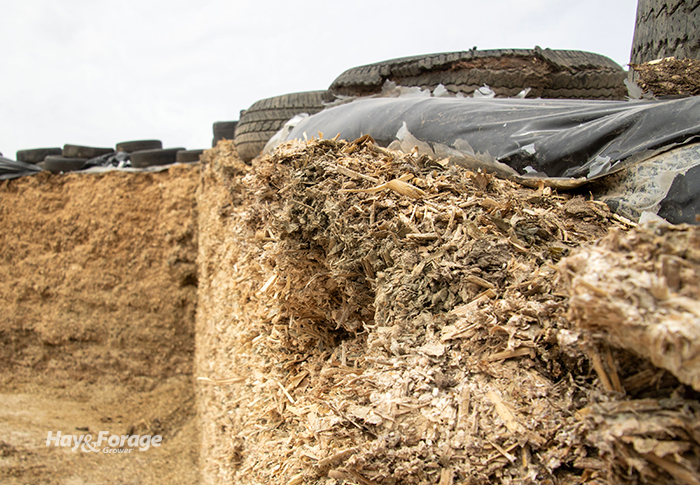Look for answers in fermentation acids |
| By Amber Friedrichsen, Associate Editor |
|
|
 The list of acid concentrations on a forage analysis is like a report card for silage fermentation. Although good grades usually indicate feed is palatable, digestible, and stable, some high scores will fail the test. In a recent article from University of Wisconsin-Madison Extension, three regional dairy educators define the different types of acid involved in silage fermentation. The concentration of these compounds largely depends on forage dry matter content and subsequent storage practices. Lactic acid is the predominant acid found in haylage and silage, but there must be a delicate balance between it and other acids to create a high-quality end product. Those include acetic acid, propionic acid, and the undesirable butyric acid. Lactic acid. In general, the more lactic acid during fermentation, the better. The educators explain that less energy is lost in forage during lactic acid production compared to acetic acid production, therefore ensuring more dry matter is available at feedout. A greater amount of lactic acid will expedite a drop in forage pH for more efficient fermentation as well. On the contrary, low lactic acid levels can occur when silages are low in moisture, exposed to cold weather, exposed to oxygen, or subject to clostridial fermentation. It is important to note that pH does not drop at the same rate for all types of forage. For example, even though normal lactic acid levels in corn silage are less than that of legume silage like alfalfa, corn silage pH can fall lower, faster. This points to the crop’s buffering capacity. “Alfalfa is harder to ferment than grass or corn silage. This is because alfalfa has high crude protein concentration, and consequently elevated ammonia, during fermentation. Ammonia buffers the pH from acid production,” the educators explain. Acetic acid. This is the acid that gives feed a vinegar odor and taste. Despite a displeasing smell, acetic acid is instrumental in inhibiting yeast and mold growth. However, high levels of it can stall fermentation and exacerbate dry matter loss, which is more likely to happen in silage that is loosely packed or extremely wet. Despite causing a slower and less efficient fermentation in haylage, the educators note that elevated acetic acid production in corn silage that is inoculated with a product that contains Lactobacillus buchneri can help moderate the high sugar content of the crop. “Acetate is a superior acid for stability, providing resistance against secondary fermentation,” they assert. “L. buchneri produce acetate while in the storage phase and acetate will increase over time. This is desirable because of the high sugars often found in corn silage that can make feed unstable at feedout.” Propionic acid. Well-fermented forage will have low levels of propionic acid. In fact, propionic acid should ideally be less than 0.1% of dry matter in legume, grass, and corn silages. Butyric acid. This acid has a rotten smell and proliferates when clostridial fermentation takes place in wet forage. Butyric acid fermentation is slow, depleting energy levels of forage and lowering forage digestibility. The educators add that butyrate is a ketone, so it can be dangerous to feed silage that is high in butyric acid to transition cows already at risk of ketosis. The odor of butyric acid also deters cows from consuming silage, causing feed intake to decline. The educators suggest feeding wet forages quickly before forage nutrients can deteriorate during clostridial fermentation. Overall, they encourage producers to use forage analyses to inform how effective storage was and how to manage silage at feedout. |
